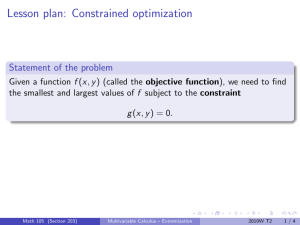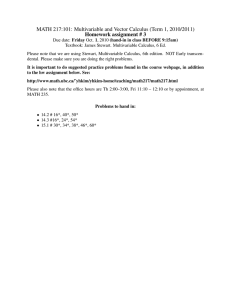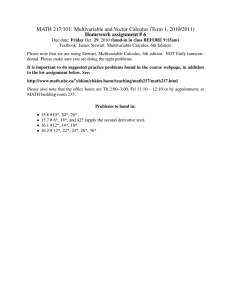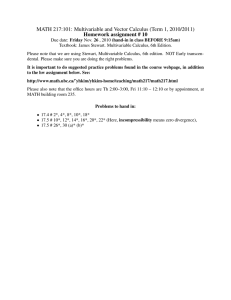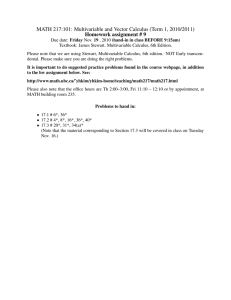Constrained optimization : a review Statement of the problem
advertisement
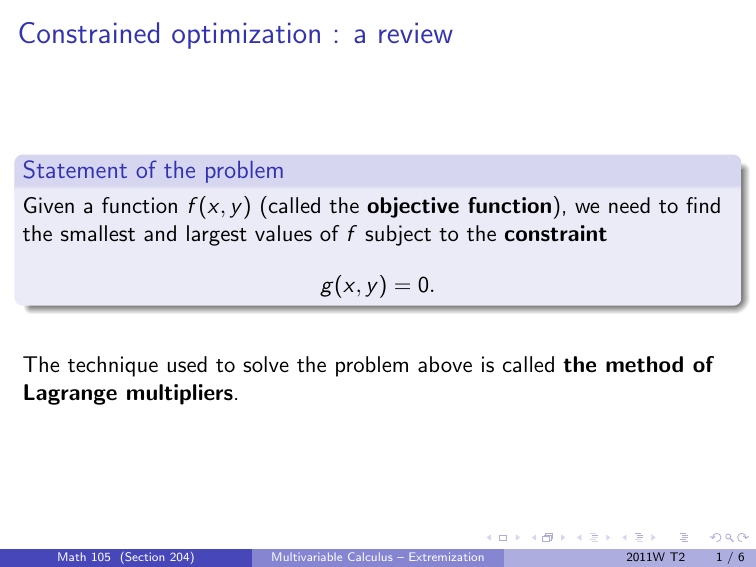
Constrained optimization : a review Statement of the problem Given a function f (x, y ) (called the objective function), we need to find the smallest and largest values of f subject to the constraint g (x, y ) = 0. The technique used to solve the problem above is called the method of Lagrange multipliers. Math 105 (Section 204) Multivariable Calculus – Extremization 2011W T2 1/6 Method of Lagrange multipliers Steps in the solution Find the values of x, y and λ that satisfy the equations ∇f (x, y ) = λ∇g (x, y ) and g (x, y ) = 0. Among the solutions (x, y ) that you found in the previous step, select the ones which gives largest and smallest values of the function f . These are the maximum and minimum values of the objective function subject to the constraint. The extraneous parameter λ is referred to as the Lagrange multiplier. Math 105 (Section 204) Multivariable Calculus – Extremization 2011W T2 2/6 An example Find the maximum value of 36 − x 2 − y 2 subject to the constraint x + 7y − 25 = 0. A. 36 B. 32 C. 47/2 D. 18 E. 20 Math 105 (Section 204) Multivariable Calculus – Extremization 2011W T2 3/6 Production optimization Suppose that x units of labor and y units of capital can produce 1 3 f (x, y ) = 60x 4 y 4 units of a certain product. Also suppose that each unit of labor costs $100, whereas each unit of capital costs $200. Assume that $30,000 is available to spend on production. How many units of labor and how many units of capital should be utilized to maximize production? A. 37.5 units of labor and 225 units of capital B. 50 units of capital and 60 units of labor C. 225 units of labor and 37.5 units of capital D. 60 units of capital and 50 units of labor Math 105 (Section 204) Multivariable Calculus – Extremization 2011W T2 4/6
